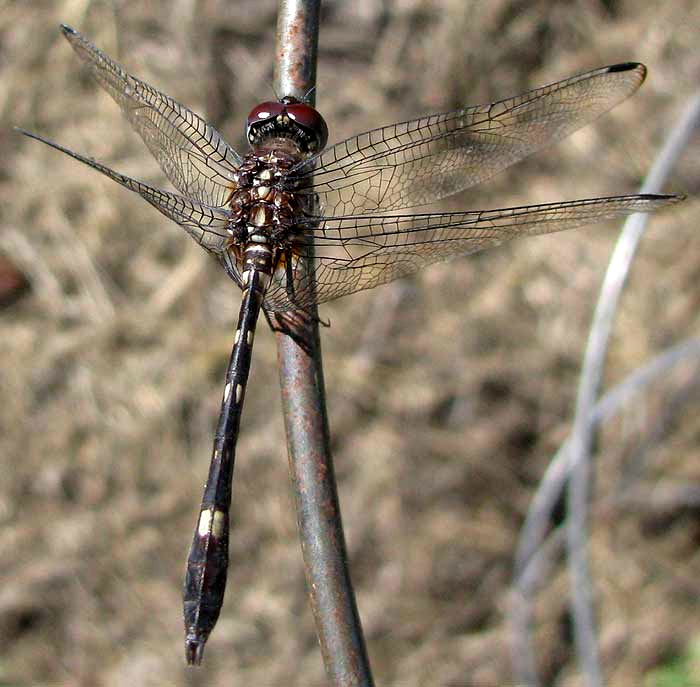Excerpts from Jim Conrad's
Naturalist Newsletter

from the September 30, 2012 Newsletter issued from the valley of the Dry Frio River in northern Uvalde County, southwestern Texas, on the southern border of the Edwards Plateau; elevation ~1750m (~5750 ft); N29.62°, W99.86°; USA
SETWING DRAGONVLY
On a hot, dry, windy, sunny afternoon a dragonfly perched on a tomato-plant cage in the garden, looking a bit out of place in such a dusty spot, though the little Dry Frio River ran only two or three stone-throws away. That's the critter above.
The unusual feature of this species was that he perched with his wings set forward, instead of straight out like a biplane's wings or a typical dragonfly's. I made sure to get the wings in sharp focus, for in dragonfly identification wing venation is very important.
Using the "Dragonflies through Binoculars" field guide for North American dragonflies I decided that my garden visitor must be the Swift Setwing, DYTHEMIS VELOX, distributed mostly in the US Southeast and the south-central states, but as far north as southern Missouri, and south into central Mexico. Species in the genus Dythemis are called setwings because of their curious manner of setting their wings forward.
However, when I count the number of cells in the front wing between the dark cell near the wingtip (the "stigma") and the little notch about midway in wing (the "nodus") there are more cells than other wing-pictures of the species show. I uploaded our picture to Bugguide.Net where another dragonfly enthusiast using a different book confirmed that, despite the extra cells, it could hardly be anything other than a Swift Setwing. So, it seems that my garden visitor is something of an anomaly. However, in Nature anomalies are permitted, if not outright encouraged.
The book says that Swift Setwings are particularly common in Texas and that they are extending their ranges northward. They are described as feeding from twigs along forest edges. Males "...perch on twigs near the water's edge, sometimes high and in shade, on hot days obelisking vertically."
"Obelisking," I was gratified to learn, is merely sticking the rear end, or abdomen, skyward. This would reduce the amount of sunlight heating the abdomen.